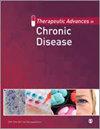n-3 PUFAs reduce tumor load and improve survival in a NASH-tumor mouse model
IF 3.3
3区 医学
Q2 PHARMACOLOGY & PHARMACY
引用次数: 15
Abstract
Background: With 9.1% of all cancer deaths, hepatocellular carcinoma is the second leading cause of cancer deaths worldwide. Due to the increasing prevalence of metabolic syndrome, nonalcoholic fatty liver disease (NAFLD) has evolved into a major risk factor for hepatocellular carcinoma development. Herein, we investigated whether a dietary n-3 polyunsaturated fatty acid (PUFA) supplementation improves the outcome of progressive NAFLD. Methods: Feeding three high-fat diets, differing in n-3 and n-6 PUFA contents and ratios (n-3/n-6: 1:8, 1:1, 5:1), the impact of n-3 PUFAs and n-3/n-6 PUFA ratios on NAFLD-related liver fibrosis and tumorigenesis was analyzed in 12- and 20-week-old streptozotocin/high-fat diet (STZ/HFD)-treated mice. Results: Feeding of n-3 PUFA-rich diets (1:1 and 5:1) resulted in increased hepatic n-3 PUFA content and n-3/n-6 PUFA ratio with decreased hepatic lipid accumulation. In 20-week-old mice, n-3 PUFA-rich diets alleviated tumor load significantly, with reduced liver/body weight index, tumor size, and tumor number. Finally, these effects were accompanied by a significant improvement of survival of these mice. Conclusions: Herein, we showed that increased n-3 PUFA content and n-3/n-6 PUFA ratios lead to improved survival and attenuated tumor progression in STZ/HFD-treated mice. Thus, n-3 PUFAs could be the basis for new therapeutic options against NAFLD-related tumorigenesis.在nash肿瘤小鼠模型中,n-3 PUFAs可降低肿瘤负荷并提高生存率
背景:肝细胞癌是全球癌症死亡的第二大原因,占所有癌症死亡的9.1%。由于代谢综合征患病率的增加,非酒精性脂肪性肝病(NAFLD)已演变为肝细胞癌发展的主要危险因素。在此,我们研究了饮食中补充n-3多不饱和脂肪酸(PUFA)是否能改善进行性NAFLD的预后。方法:饲喂3种不同n-3和n-6 PUFA含量和比例(n-3/n-6: 1:8, 1:1, 5:1)的高脂饲料,分析n-3 PUFA和n-3/n-6 PUFA比例对12周龄和20周龄链脲佐菌素/高脂饲料(STZ/HFD)小鼠nafld相关肝纤维化和肿瘤发生的影响。结果:饲喂富含n-3 PUFA的饲粮(1:1和5:1)增加了肝脏n-3 PUFA含量和n-3/n-6 PUFA比值,降低了肝脏脂质积累。在20周龄小鼠中,富含n-3 pufa的饮食显著减轻了肿瘤负荷,降低了肝脏/体重指数、肿瘤大小和肿瘤数量。最后,这些效果伴随着这些小鼠生存的显著改善。结论:本研究表明,增加n-3 PUFA含量和n-3/n-6 PUFA比率可以提高STZ/ hfd治疗小鼠的存活率,减缓肿瘤进展。因此,n-3 PUFAs可能是针对nafld相关肿瘤发生的新治疗选择的基础。
本文章由计算机程序翻译,如有差异,请以英文原文为准。
求助全文
约1分钟内获得全文
求助全文
来源期刊

Therapeutic Advances in Chronic Disease
Medicine-Medicine (miscellaneous)
CiteScore
6.20
自引率
0.00%
发文量
108
审稿时长
12 weeks
期刊介绍:
Therapeutic Advances in Chronic Disease publishes the highest quality peer-reviewed research, reviews and scholarly comment in the drug treatment of all chronic diseases. The journal has a strong clinical and pharmacological focus and is aimed at clinicians and researchers involved in the medical treatment of chronic disease, providing a forum in print and online for publishing the highest quality articles in this area.
 求助内容:
求助内容: 应助结果提醒方式:
应助结果提醒方式:


